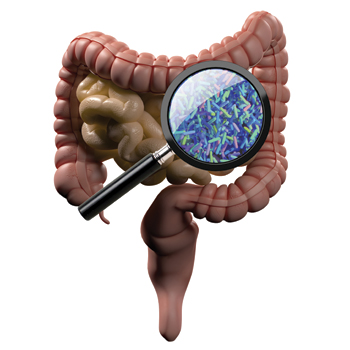Calculate ‘sum of the parts' to pinpoint CV risk in women
Women face a steep increase in cardiovascular risk after menopause, requiring internists to incorporate composite indicators into the annual exam at midlife.
Clinicians should take a long-term view when managing cardiovascular risk in women at midlife, according to Beth L. Abramson, MD, MSc.
“When you're seeing your perimenopausal and postmenopausal women in your office, your goal is to make [them] feel well and live a long, vibrant life,” she told attendees at the North American Menopause Society's 2017 meeting in Philadelphia in October. “We're in it for the long run, and there's a lot of data on prevention. … We're here for long-term health and vibrancy of our female patients.”

Women face a steep increase in cardiovascular risk after menopause, said Dr. Abramson, who is associate professor of medicine at the University of Toronto and director of the Cardiac Prevention Center and Women's Cardiovascular Health in the division of cardiology at St. Michael's Hospital. “And our job as health care providers and menopause experts is to address that risk, as women go through midlife and beyond to reduce the death statistics,” she said.
Dr. Abramson noted that while data from the American Heart Association indicate a decrease in cardiovascular mortality rates over the past 30 to 40 years in older women, mortality rates in younger women have not decreased.
“We need to be aware of this, because there may be an explosion of cardiovascular issues at midlife and beyond that we will start seeing in the next decade or so,” she said. “This is actually very concerning.”
Beyond traditional risk factors
Traditional risk factors for cardiovascular disease are age, sex, high blood pressure, smoking, family history, and abnormal lipid levels, Dr. Abramson said. However, she stressed that composite indicators such as the Framingham Risk Score should also be incorporated into the annual exam for women at midlife, and that clinicians should take care to avoid underestimating risk in women.
“My risk at face value, as a younger, non-gray-haired woman—as we are taught in medical school, and in our training—is that it's lower than the older gray-haired man. And while that's probably true, there are other aspects of the risk that we need to consider,” she said. “The sum of the parts is greater than the individual.”
Dr. Abramson gave the example of a postmenopausal 56-year-old woman who smokes, has slightly elevated blood pressure, and has a brother who had a heart attack at age 54. Her 10-year risk according to the Framingham Risk Score would be “high for cardiovascular events over the next 10 years,” she said.
In discussions of risk factors, smoking should be at or near the top of the list, Dr. Abramson stressed. “I would say we're shuffling deck chairs on the Titanic if we're talking about differences in millimole or milligrams per deciliter of lipids that we're lowering, if a woman is still smoking,” she said.
Visceral fat is another important risk factor, she noted, with changes in fat distribution making the “apple shape” more likely as a woman ages. “The problem with that apple shape is that it's the dangerous inner fat, the visceral adiposity, that's associated biologically with adverse events,” she said.
Visceral adiposity increases LDL levels, increases risk for diabetes and insulin resistance, affects platelets and blood clotting, and impairs glucose tolerance, she said. “So that extra weight across the waist that women will potentially develop as they move through midlife is something that you need to address.”
Women who have hypertension during pregnancy are also at heightened risk for cardiovascular disease later in life, Dr. Abramson said. “These are the women, these are the low-hanging fruit, that we need to really pay attention to as we address the risk and follow them as they head towards menopause and beyond,” she said. “In fact, the data suggests that they have as much as a 50% greater chance of premature cardiovascular death in the long run.”
Dr. Abramson acknowledged that discussing risk with these women could be difficult because they may not want to think about cardiovascular risks that could present in 20 or 30 years. “That's hard for all of us,” she said. “I can't think about tomorrow, necessarily.”
However, she noted that it's important to address weight loss and measure blood pressure, glucose levels, and lipid levels early in women who have this risk factor. “As clinicians, this is the red warning sign,” she said.
Examining HOPE-3
Dr. Abramson also discussed the results of the HOPE-3 (Heart Outcomes Prevention Evaluation) trial, which involved men at least 55 years of age and women at least 65 years of age without cardiovascular disease who had at least one of the following cardiovascular risk factors:
- a waist-to-hip ratio of 0.85 or greater in women or 0.90 or greater in men,
- a history of smoking or current smoking,
- low HDL levels,
- prediabetes or uncomplicated diabetes controlled with diet,
- early kidney dysfunction, or
- a family history of cardiovascular disease.
Women 60 years of age and older could also be included in the trial if they had at least two of these risk factors.
Overall, 12,705 patients were randomly assigned in HOPE-3, 46% of whom were women. All patients received lifestyle advice for reducing cardiovascular risk. A total of 3,176 patients were assigned to receive candesartan, 16 mg/d, plus hydrochlorothiazide, 12.5 mg/d, and placebo; 3,181 were assigned to receive rosuvastatin, 10 mg/d, plus placebo; 3,180 were assigned to receive candesartan, 16 mg/d, plus hydrochlorothiazide, 12.5 mg/d, and rosuvastatin, 10 mg/d; and 3,168 were assigned to receive placebo plus placebo. Median follow-up was 5.6 years.
HOPE-3's first coprimary outcome was death from cardiovascular causes, nonfatal myocardial infarction, or nonfatal stroke; the second coprimary outcome was a composite of the previous events plus resuscitated cardiac arrest, heart failure, or revascularization. The study's secondary outcome was the events in the second coprimary outcome plus angina with evidence of ischemia. The HOPE-3 trial results were published in May 2016 in a series of articles in the New England Journal of Medicine and showed that risk for cardiovascular events was significantly lower in both the statin-antihypertensive treatment group and in the group taking statins alone.
“This is a bittersweet trial for me as a preventive cardiologist because it flies in the face of everything I've tried to do in the last 15 years of my career. I'm a strong proponent of lifestyle and, where appropriate, medications,” Dr. Abramson said. “It turns out, medications are probably better than lifestyle alone in many individuals.”
Dr. Abramson asked her audience to consider how many of their patients would have been eligible for the HOPE-3 trial, pointing out that most of the trial participants qualified on the basis of waist-to-hip ratio alone. “Think about that,” she said. “A woman in your practice who's 60, who has a family history of premature coronary disease, cardiovascular disease, and has a waist-hip ratio that reflects the postmenopausal state, got into the HOPE-3 trial,” and therefore could potentially benefit from medication.
Of interest, the antihypertensive arm of the HOPE-3 trial didn't demonstrate much of an effect, Dr. Abramson said, with no significant difference found between those taking candesartan-hydrochlorothiazide and those taking placebo. “Overall, prescribing a blood pressure pill for the sake of it is not beneficial from this study,” she noted.
However, prescription of statins alone was a different story, with a hazard ratio of 0.76 for the first coprimary outcome and 0.75 for the second coprimary outcome versus placebo.
“This was truly a positive trial that has changed the way I approach and practice medicine,” Dr. Abramson said. “The clinical pearl from a preventive cardiology perspective is that if you have someone who calculates out to be moderate risk, not high and not low, they by and large would have fit into the HOPE-3 population. So I extrapolate that data, and I am prescribing preventive therapies in that population.”





